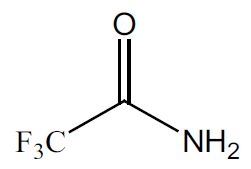EPJ D Highlight - Electron scavenging to mimic radiation damage
- Details
- Published on 30 November -0001

New study could help unveil negative effect of radiation on biological tissues due to better understanding of low energy electron-induced reactions
High energy radiation affects biological tissues, leading to short-term reactions. These generate, as a secondary product, electrons with low energy, referred to as LEEs, which are ultimately involved in radiation damage. In a new study, scientists study the effect of LEEs on a material called trifluoroacetamide (TFAA). This material was selected because it is suitable for electron scavenging using a process known as dissociative electron attachment (DEA). These findings were recently published in EPJ D by Janina Kopyra of Siedlce University, Poland, and colleagues in Germany, as part of a topical issue on Advances in Positron and Electron Scattering.
Experiments confirm that DEA reactions occur due to electrons entering unoccupied molecular orbitals, at an energy level located near one electronvolt. This means that low-energy electrons can be exploited with solid materials like TFAA to trigger selective reactions, resulting in multiple bond cleavages inside the material. Ultimately, this leads to the creation of specific negative ions and stable molecules of interest.
The team performed two types of experiment. The first type, in gas phase, involves crossing a monoenergetic beam of LEEs with a molecular beam containing TFAA. The authors report the formation of fragment negative ions from the DEA processes. Energetic considerations leads them to then postulate that the reaction lead to the loss of neutral molecules--namely hydrogen fluoride (HF), isocyanic acid (HNCO) or water (H2O)--from transient parent anion.
In a second series of experiments, the author shine a LEE beam on a solid film of TFAA on a metal substrate. These low energy electrons trigger surprisingly complex reactions in TFAA, leading to multiple bond cleavages inside the material. These, in turn, result in the formation of negative ions and stable neutral molecules like HF, HNCO or water as a neutral counterparts. The results confirm the hypothesis of the gas phase experiment. The authors confirm that formation of stable molecules is effectively due to electron-induced fragmentation of TFAA.
J. Kopyra, C. König-Lehmann, E. Illenberger, J. Warneke, P. Swiderek (2016), Low Energy Electron Induced Reactions in Fluorinated Acetamide – Probing Negative Ions and Neutral Stable Counterparts, Eur. Phys. J. D 70:140, DOI 10.1140/epjd/e2016-70143-4




